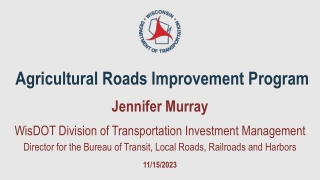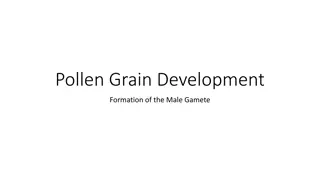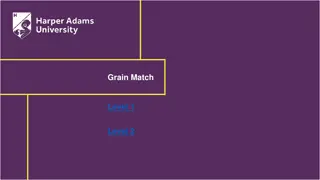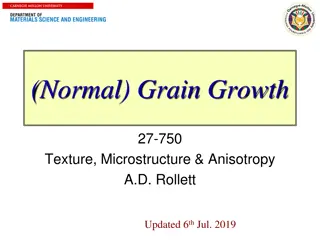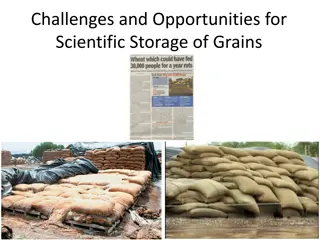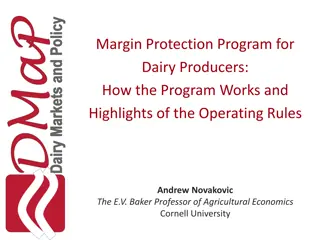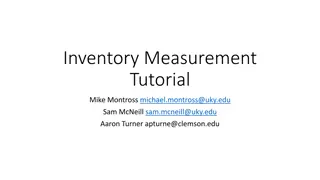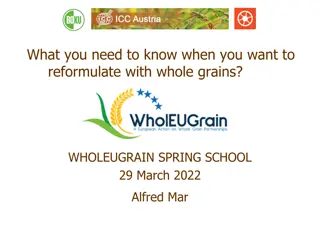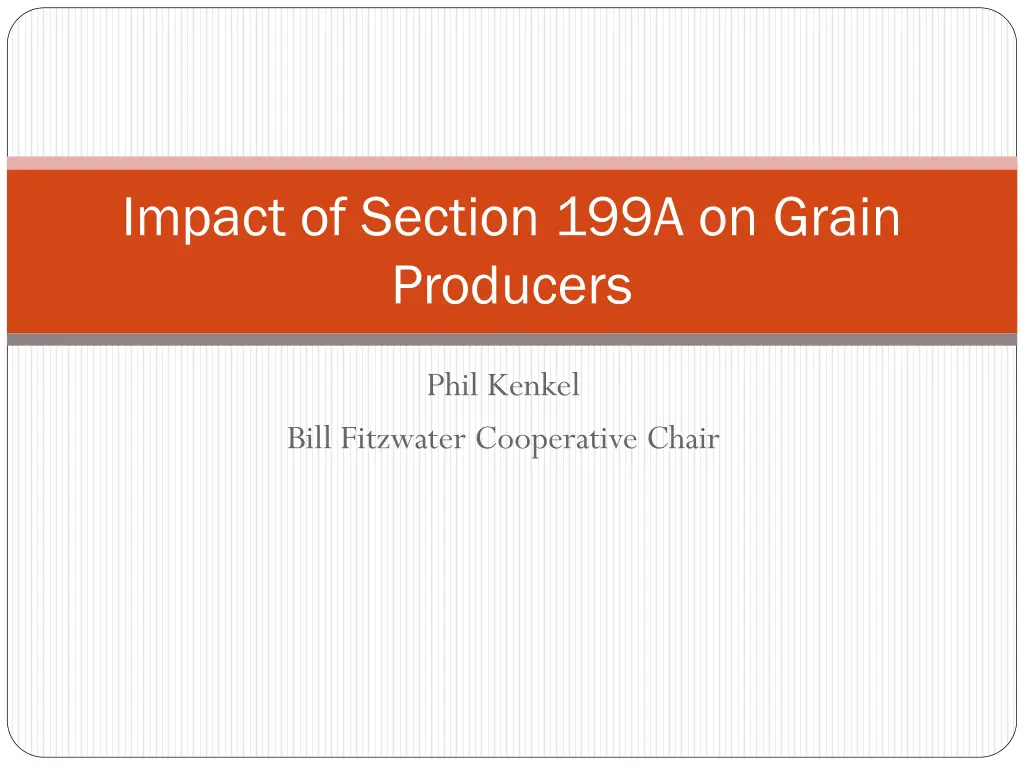
Impact of Section 199A on Grain Producers | Tax Cuts Analysis
Discover the impact of Section 199A on grain producers post the Tax Cuts and Jobs Act, including key aspects, cooperative taxation overview, changes from the old Section 199 (DPAD), and insights into the revised Section 199A affecting farmers' deductions and marketing cooperatives.
Download Presentation

Please find below an Image/Link to download the presentation.
The content on the website is provided AS IS for your information and personal use only. It may not be sold, licensed, or shared on other websites without obtaining consent from the author. If you encounter any issues during the download, it is possible that the publisher has removed the file from their server.
You are allowed to download the files provided on this website for personal or commercial use, subject to the condition that they are used lawfully. All files are the property of their respective owners.
The content on the website is provided AS IS for your information and personal use only. It may not be sold, licensed, or shared on other websites without obtaining consent from the author.
E N D
Presentation Transcript
Impact of Section 199A on Grain Producers Phil Kenkel Bill Fitzwater Cooperative Chair
Key Aspects of the Tax Cuts and Jobs Act Reduced the top corporate tax rate to 21% Eliminated the Section 199 Domestic Production Activities Deduction (DPAD) Created a new Section 199A This provision became controversial and was revised The structure of the revised Section 199A has created questions as to whether tax impacts should or will effect decisions on where to deliver grain
Overview of Cooperative Taxation For federal income tax purposes a cooperative calculates its taxes similar to other corporation but can exclude certain distribution of member s profits from taxable income. Cooperative members include distributed profits in their taxable income This creates a pass through taxation structure and because of that structure cooperatives do not substantially benefit from a reduction in the corporate rate. This was the argument for creating a Section 199A deduction at the cooperative level
The Old Section 199 (DPAD) Originated out of the American Jobs Creation Act of 2004 Applied to domestic manufacturing firms which was eventually interpreted to include farmers The deduction was phased in but in 2010 it was calculated as the lesser of 9% of qualified production activities income or 50% of W-2 wages associated with the qualified production activities income. Cooperatives could retain the deduction or pass some or all of it on to members
More on the Old Section 199 (DPAD) Marketing cooperatives could structure commodity payments such that the cooperative was considered to be collectively producing commodities on behalf of its members. Many cooperatives re-characterized commodity payments as per unit retains paid in money (PURPIMs) which are not considered cost of goods sold and did not reduce qualified income Due to W-2 wage limitation it was generally more advantageous to calculate DPAD at the cooperative level
Section 199A (after revision) All producers except those farming as a C-corporation get a 20% pass through entity deduction from qualified income. Marketing cooperatives can receive a deduction at the cooperative level which they can keep or pass on. Farmers marketing commodities through cooperatives face a potential offset in their 20% pass through deduction. The offset is based on farm level calculations and is not linked to the actual pass through they received (or didn t receive) from their cooperative.
The Section 199A Cooperative Level Deduction 9% of qualified production income less the costs of goods sold and other expenses associated with that income. Cooperative level deduction is capped at 50% of cooperative s W-2 wages associated with commodity sales The cooperative can retain the deduction or pass some or all of it on to the members
The Cooperative Level Deduction: PURPIMS Just like with DPAD cooperatives will need to re- characterize commodity payments as per unit retains paid in money (PURPIMs) which are not considered cost of goods sold, to get a significant Section 199A deduction
Producers 20% Deduction All producers doing business in a form other than a C- corporation receive a deduction equaling 20% of their net income from commodity sales but not exceeding their taxable income. The deduction phases out when taxable income exceeds $157,000. Producers marketing commodities through a cooperative face a possible offset in the deduction. The offset is not linked to the amount of the cooperative deduction that is passed through
Offset for Cooperative Delivering Producers Reduced by the lesser of 9% of the producer s income from commodity sales plus patronage or 50% of the producer s W- 2 wages. The producer s offset has a similar structure to the cooperative s deduction but are calculated on different bases. A producer with no W-2 wages faces no offset but a producer with high W-2 wages could theoretically have their 20% deduction reduced to 11%
Comparison for Producers Marketing through Cooperatives or Independents Independent delivering producers retain their 20% deduction but have no potential for a pass through deduction or profit distribution from the grain handler. Cooperative delivering producers face potential offset of their 20% deduction but have the potential for a pass through deduction and patronage from the cooperative The advantage or disadvantage of delivering to a cooperative depends on the balance of those two factors.
Lots of Poor Information Out There Large producers are better off delivering to independents Producers possible deductions range from 11% to 29% Some examples are based on cooperatives with almost no W- 2 wages and farms with very high W-2 wages. Both of those are very unusual.
A Realistic Comparison Most recent (2016) data to determine sales, margin, local savings, labor expense and potential Section 199A cooperative level deduction for representative grain marketing cooperative Most recent (2013) USDA ERS statistics to determine total revenue, yield and wage expense for representative Southern Plains grain farm
Section 199A and Patronage Cooperative Cooperative Labor: $0.15/bu. Savings $0.079/bu. 9% of QPI: $0.33 50% W-2 Wages: $0.073 Section 199A deduction:$0.073 Pass through to producer 75%: $0.055 Cash patronage (50%): $0.036/bu. Patron Patron 9% of income + patronage: $.32/bu. 50% W-2 Wages: $0.061/bu. Offset per bushel: $0.061 Cooperative pass through: $0.055 Cash patronage: $0.036/bu. Net change in tax deduction: $0/bu. (actually: -$0.006) Net change with patronage:$0.03/bu.
Impact on Producers Delivering to Cooperatives Representative cooperative needs to pass on 75% of cooperative level Section 199A Deduction to keep a cooperative delivering (representative) producer equivalent to an independent delivering producer. Would need to pass on 40% if patronage is factored in. Producers with below average W-2 wages would be equivalent at lower pass through while those with higher W-2 wages would require higher pass through
Approximately 20% of grain producers have sufficient W-2 wages to make the 9% of qualified income the binding offset Figure 1. Histogram of Labor-to-Income Ratio for Producers in the Kansas Farm Management Association Data 2016 For the average producer wages represent 3.3% of qualified income. When W-2 wages exceed 9% of income the 9% threshold becomes the binding Factor in the offset calculation
Who Are These High Wage Producers ? $4M in assets $1M in commodity sales 11% are organized as C-Corporations and are not eligible for the 20% deduction unless they change business type (information from Kansas Farm Management Association database 1980 to present)
Bottom Line for Cooperative Boards and CEOs The cooperative will need to pass a portion of their Section 199A deduction to eliminate a tax penalty from marketing through the cooperative. Cooperatives that did not take the previous DPAD deduction cannot afford to ignore the Section 199A deduction. The Section 199A deduction is similar to the decision on cash patronage. It is a balancing act between the cooperative s needs and the patron s needs and it is determined at year end, long after the grain is delivered.
Bottom Line for Grain Producers Many producers have little or no W-2 wages and will face no offset to their 20% deduction. The deduction is based on 20% of qualified income but is capped at taxable income. Some producers won t have enough taxable income to use all of their 20% deduction. Cooperative boards will obviously have the need to pass through a portion of the Section 199 deduction on their radar and are likely to pass through an appropriate amount. The best advice is to continue to do business with the agribusinesses that provide the best service and value package. For most producers tax effects should not be a major consideration.
Questions? Phil Kenkel Regents Professor and Bill Fitzwater Cooperative Chair Department of Agricultural Economics Oklahoma State University 405-744-9818 Phil.kenkel@okstate.edu OSU Fact Sheet AGEC 1076 Impact of Revised Section 199 A on Grain Producers http://factsheets.okstate.edu/documents/agec-1076-impact-of- revised-section-199a-on-grain-producers/

